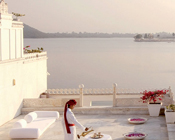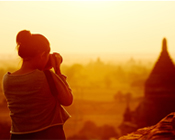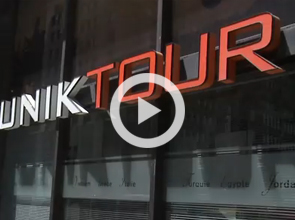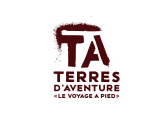Overview
FIND MORE TRIPS
- Custom travel to Japan
- Welcome to Japan, a country whose history and culture has fascinated us for centuries. With an archipelago of over 4,000 islands, it is undoubtedly a nation of many different faces, and if diversity is a theme that you embrace, then this travel package will ensure an unforgettable voyage. Geishas in glittering attire, enormous Buddhas towering over majestic shrines, landscapes carved by man, megacities bristling with skyscrapers and the world’s most advanced technology are only a few of the pieces to one of the greatest puzzles of the world.
To fully absorb all facets of the extraordinary adventure that awaits you in the land of the Samurai, you will travel at your own pace, by train, exploring the most emblematic places of magical Japan along the way. Tokyo abounds, where the Imperial Palace and its centuries-old formalities sits just minutes from one of the biggest shopping centres in the world. The traditional city of Kyoto and its beautiful parks, and Kamakura, the spiritual heart of Japan, whose enchanting atmosphere will engulf you in its magic.
Bamboo forests, views of Mount Fuji and rice paddies designed like giant staircases make for ideal diversions along your journey, providing the freedom to relax after fascinating visits to the country’s most impressive sites. The country’s most sacred rituals await you, where art is celebrated in all of its forms: tea ceremony, Shinto wood temples of incomparable beauty, ornate designs of the finest lace, zen gardens adhering to a strict philosophy. This vacation package to Japan, filled with life experiences and cultural enrichment, is second to none.
Don’t hesitate to contact our Uniktour Japan expert for more information on this trip designed to travel freely!:
- Day 1 | International Flight
Meals and movies on board.
- Day 2 | Arrival in Tokyo
Arrive late afternoon at Tokyo Narita Airport. Evening free.
- Day 3 | Tokyo
Breakfast, free morning and afternoon, half-day group city tour.
Cruise on the Sumida River and visit the Senso-Ji Temple in Asakusa. Late afternoon visit to the Imperial Palace gardens and then back to your hotel.
The Imperial Palace
The Imperial Palace, formerly known as Edo Castle, remains surrounded by its original moat. Beautiful ancient doors and guard towers accent the walls at regular intervals. The Nijubashi, an elegant bridge with two arches, leads to the main entrance. The East Garden (Higashi Gyoen) hosts the remains of the ancient castle. A variety of colourful flowers decorate the garden seasonally, offering a peaceful resting environment for visitors to relax in.
Asakusa
The Asakusa district, an area extending along the Sumida River, draws you into the unique universe known as Tokyo, where the spirit of “Old Edo” lives on, steeped in tradition. The Sensoji Temple is its focal point, as well as the “Nakamise Dori”, the commercial street that leads to it, where pedestrians will find an abundance of shops offering a full range of kimonos and other traditional items.
This district is a popular outing for most Tokyoites, with its countless restaurants, cinemas, theatres and other entertainment facilities.
- Day 4 | Tokyo
Continue exploring Tokyo, but this time with a private francophone guide. Recommended sites for morning visits: the Tsukiji Fish Market and Hamarikkyu Park.
Tsukiji Market
There are many places where Japan’s extraordinary culinary diversity can be explored, however the Tsukiji Fish Market’s bustling environment is probably the most fascinating place to do so. There are more than 450 varieties of fish, seafood and shellfish to choose from, sold in wide variety of stores. After a visit to the market, you can sample a delicious sushi breakfast along Uogashi Yokocho street, where small fish shops and restaurants abound.
Having feasted on sushi for breakfast, visit Hamarikyu Garden, one of the most beautiful parks in all of Tokyo.
In the afternoon, suggested visits include the Ginza district and the Imperial Palace, the Ueno district and the National Museum.
- Day 5 | Tokyo - Kamakura - Tokyo (B)
Local train transportation recommended for visiting the historic city of Kamukura and its temples and shrines. Visit should include: Kotoko (where the Giant Buddha resides), Hase Kannon and Tsurugaoka Hachimangu temples.
Kamakura, an hour by train from Tokyo, is a quiet coastal town whose landscape is dotted with temples. Since the presence of the feudal government which took up quarters here in 1192, the town still maintains an historical legacy of the utmost importance.
It is the Great Buddha in bronze, of course, which the most visitors to Kamakura. The massive “Daibutsu” meditates in the lotus position, under the sky, and measures 11.4 metres high and weighs 122 tons.
Return to Tokyo at the end of the day.
- Day 6 | Tokyo
Free day in Tokyo. Suggested tours include the Shinjuku, Shibuya, Harajuku and Omotesando districts.
Shibuya
The birthplace of Japanese popular culture, Shibuya offers a lively atmosphere of shops, bookstores, cafes and bars, restaurants, cinemas, concert halls and amusement arcades. The theme of the district is “fun”. Just steps away, Yoyogi Park and the Harajuku district are gathering points for Tokyo’s trendy youth. Dividing the two is Koen-dori street, which is more of a family-oriented district with its department stores and fashion boutiques.
Continue on to Harajuku station to visit the Meiji Shrine, a Shinto shrine erected in dedication to Emperor Meiji and his descendants. This structure is a particularly interesting example of Shinto architecture. A building at the rear of the sanctuary houses the Treasury, a collection of items tied to imperial divinity and worship.
Shinjuku
Tokyo’s thriving business district is divided into two parts. Around the west exit of the station, you’ll find a business district lined with rows of gigantic skyscrapers. Dominating the sky, the twin towers of the “Tokyo Metropolitan Government Office Building” offer panoramic views from the top of the 45th floor. On clear days, you can see Mount Fuji in the distance, and at night, the beautiful city lights provide memorable views. The trendy and bustling Kabuki-cho district abuts the east exit, with a mix of interesting shops, bars and nightclubs. Dining in this part of the city is always an interesting experience!
Roppongi
Roppongi is Tokyo’s trendiest night spot, offering a mix of restaurants, bars and nightclubs. On the other hand, the commercial streets of Azabu Juban allow you to soak up the atmosphere of old Tokyo. The landmark “Tokyo Tower” rises 333 metres high, yet it takes only a minute to reach its observation deck located at 250 metres. You can take in colourful views at the aquarium, with more than 900 species of fish, or you can take in the 3D works of the Image Gallery. The nearby Roppongi Hills shopping complex offers a plethora of cultural activities, as well as 230 shops, a cinema complex, a hotel and green spaces. The top floor of the Mori Tower houses the Mori Arts Center, home of the Mori Art Museum and its terrace with panoramic views.
- Day 7 | Tokyo - Tsumago
Transport by train and visits to the villages of the Kiso Valley with a francophone guide. Kiso Valley is located at the foot of the Ontake-san volcano and is one of Japan’s most breathtaking forest areas, famous for its traditional houses lined along stone roads. The region developed thanks to Nakasen-do, a road which connected Edo (Tokyo) to Kyoto between the 17th and 19th centuries. The Narai villages of Tsumago and Magome are just some of the old stations that you can visit in the area. Night in Tsumago.
- Day 8 | Tsumago
Enchanting rustic charm emanates from this small village where time stands still. Old wooden facades guarded by lazy cats, where Tsumago locals view modernity as barbarism: through government decree, the city has been preserved, and TV aerials and other electrical poles are prohibited. Enjoy the village surroundings and get lost in the revery of rice fields shaded by the surrounding hills.
- Day 9 | Tsumago - Matsumoto - Takayama (B, D)
Return by train to Matsumoto and transfer by bus to Takayama. Rest of the day is free to explore the city.
Night in Ryokan in a traditional Japanese room.
- Day 10 | Takayama (B, D)
Free visit to Takayama
The Jinya and Miyagawa markets and are very popular in Takayama. Every morning, the wives of farmers in the surrounding villages come to the markets with their fresh produce (vegetables and flowers). A variety of harvests mark the changing seasons in the mountainous region that surrounds the city.
Takayama is a quiet little town in the heart of the Japanese Alps, which is famous for its traditional architecture and carpentry. The city is also known for its legendary festivals that take place twice a year, in spring and fall, when spectacular parades of wooden chariots take hold, built according to traditional techniques used in the past.
- Day 11 | Takayama - Kanazawa (B, D)
Visit the traditional villages and Gokayama and Shirakawago in the company of a driver and an anglophone guide. Entries to Shirakawa-go Minkaen, the former residence of the Toyama Family, and the Japanese papermill, Gokayama, are included. Transfer to Takayama in the afternoon. Transfer to Kanazawa in the late afternoon.
Shirakawa-go and Gokayama
Nestled in the heart of the mountains, Shirakawa-go and Gokayama are serene villages marked by a dissecting river and abundant rice fields. The adjoining villages earned UNESCO World Heritage Site status in 1995, thanks to their traditional houses built in the gassho-zukuri style. The most interesting characteristic of these wooden houses is their thatched, sloping, triangular roofs, shaped like hands in prayer (gassho) and designed to support the weight of snow, which is abundant in the region. Several generations live together. The last level is traditionally reserved for rearing silkworms.
Kanazawa
A trip to Kanazawa submerges you in Japan’s feudal era. Streets lined with stately homes, ancient neighborhoods of pleasure, its castle and the beautiful Kenrokuen garden all contribute to its exotic status. Kanazawa is also an craftsman’s conservatory: Kaga-Yuzen silk kimonos, Kutani and Ohio ceramics, Wajima lacquer, treated in gold leaf and powder, etc. Reputed Noh performances and famed traditional cuisine also contribute to the refinement of this city.
- Day 12 | Kanazawa - Kyoto (B)
Free tour of the Kenrokuen garden.
Kenrokuen Park
Considered one of the three most beautiful gardens in Japan, this landscaped 10 hectare park was established in 1676 as the outdoor garden of Kanazawa Castle. It owes its nickname as the “Garden of six combined elements” to its six magical qualities: vastness, solemnity, careful arrangement, venerability, freshness (due to the waters running through it) and its charming landscapes.
Transport by local train to Kyoto. Arrival at Kyoto Station and transfer to the hotel. Visit the district of Gion, Nijo Castle and Maruyama Park.
Kyoto is one of the most traditional cities in Japan, due to its impressive concentration of temples and shrines (about 2000), some of which have tremendous historical and religious importance. The presence of beautiful Zen gardens and fine dining traditions (kaiseki) add to its allure. But, as is the case in many parts of Japan, modernization has given rise to concrete buildings which connect to the city’s old traditional houses (machiya).
Gion often comes to mind when talking about Kyoto. Ancient Japan’s architectural perfection can be felt in its residential streets, and you’ll soak in a unique atmosphere where elegant maiko (apprentice geishas) stroll. Gion also offers many shops selling traditional artifacts and typical crafts of the city. A little higher up, the Kyoto Imperial Palace and Nijo Castle face off, standing as symbols of the powers at play in this ancient capital.
- Day 13 | Kyoto (B, D)
Visits to Kinkakuji Temple (Golden Pavilion) and Ryoanji Zen temple in the company of an anglophone guide.
The Kinkakuji Temple, or “Golden Pavilion”, was originally the restful villa of a shogun known as Ashikaga. Upon his death, it was converted into a temple. A beautiful garden extends from the gold leaf covered pavilion, which is a perfect replica of the original building, destroyed in 1950 and rebuilt in 1955.
Ryoanji Temple is famous for its garden, which is a perfect example of Karesansui inspiration. Fifteen rocks emerge from a sea of white sand. Its simplicity and purity embody the principles of Zen Buddhism.
Afternoon visits to the temples and bamboo forests of the Arashiyama and Sagano regions. Entrances to temples and Jojyakkoji Tenryu-ji included.
The Arashiyama area
During the Heian era (794-1192), Arashiyama was the favourite strolling area of the imperial court. Time is engrained on its surrounding landscape, and still today, you can stroll through a bamboo forest, admire cherry blossoms in the spring or red maples in the autumn, or celebrate a full moon festival...
Traditional Kaiseki dinner in the evening at Yoshida Sanso restaurant.
- Day 14 | Kyoto (B)
Tours with private guide.
Sanjusangendo
This temple, rebuilt in 1266, is famous for its eleven-face wooden statue of Kannon bodhisattva, considered to be a National Treasure. It is surrounded by 28 statues of his guards and a thousand other smaller reproductions of the same bodhisattva. Measuring 118 metres in length, it is the world’s longest wooden building.
Kiyomizudera Temple
Founded in the late 8th century, Kiyomizudera Temple is located at the foot of Higashiyama Hill. The main building, a National Treasure, was rebuilt in 1633 by the Tokugawa shogunate. Its wooden deck, supported by 139 giant pylons and rising 15 metres high, overlooks a ravine and offers magnificent views of the city.
Stroll along Philosophers Trail and exploration of various temples and gardens. Arrival at Ginkakuji Temple (Silver Pavilion) and site visit.
Ginkakuji Temple
Ginkakuji Temple, or the “Silver Pavilion”, was constructed in 1489 to serve as the villa of shogun Ashikaga Yoshimasa, who dreamed of having it covered in silver leaf. His dream unrealized, the structure was converted into a Buddhist temple upon his death. The pavilion is a National Treasure, with a garden that serves as a prime example of Karesansui (rock garden).
Fushimi-Inari is one of the most famous Shinto shrines in the country. Its main attraction is numerous small torii (a kind of portico), offered by the faithful. They stand on the hill, forming a tunnel 4 kms long.
- Day 15 | Kyoto (B)
Free day.
Suggested visit to Katsura Villa. The Katsura Imperial Villa is located in a charming suburb close to the Katsura River, offering panoramic views of the surrounding hills of Arashiyama and Kameyama. It is a model of Japanese traditional architecture and garden-landscape art, built in the 17th century for an imperial prince. The central garden pond is surrounded by numerous tea houses. To visit the villas, you must present yourself, with passport, to the Imperial Household Agency, where you can fill in a request form. Authorization is given to participate in a guided tour. Must be 18 and over to visit.
Permission to visit is granted based on availability. Requests may also be made via Internet at: http://sankan.kunaicho.go.jp/english.
Tea ceremony
The tea ceremony, called chanoyu (literally meaning “hot water for tea”) or sado (“way of tea”), is the quintessence of Japanese culture. This ceremony must meet four basic principles: harmony, respect, purity and serenity. According to these principles, beauty is synonymous with simplicity and naturalism through “raw” objects or teahouses whose numbers and cramped quarters often surprise visitors.
- Day 16 | Kyoto - Nara - Kyoto (B)
Recommended to start your journey by train to Nara (about 45 minutes), located 42 kms south of Kyoto, a former capital of Japan known as the cradle of art, literature and Japanese culture.
Suggestions: To the west lies the Kofukuji Temple, erected in 710. Numerous valuable Buddhist statues are exhibited in the House of the National Treasury, and the temple features a five-storey pagoda, reflected in the waters of the Sarusawa pond.
Todaiji Temple, housing the Great Buddha of Nara, is the city’s most famous ancient monument.
The Grand Kasuga Shrine, built in 768, is one of the most famous Shinto shrines in Japan. The red vermilion laquered houses present a striking and beautiful contrast against the lush surrounding vegetation. 1,800 stone lanterns line the walls of the sanctuary, and one thousand metal lanterns hang from eaves along its corridors.
Return to Kyoto in the late afternoon.
- Day 17 | Kyoto - Hiroshima - Miyajima (B, D)
Luggage transportation service to Tokyo, traveling with only what you need for the next two days. Morning departure by shinkansen train as far as Hiroshima, and then by local train to Miyajimaguchi. Board the ferry to Miyajima. Visit the Itsukushima Shrine and ascend Mount Misen on foot.
Miyajima
“The island where man and god coexist” has been a sacred place since the erection of the Itsukushima Shrine in 593. The shrine, dedicated to the guardian goddess of the seas, has the unique characteristic of being partially built in the sea, with buildings on stilts and its torii stretching tens of metres wide. A beautiful island landscape of magnificent beaches and hiking trails make this a popular summer destination. However, both spring and fall offer great charms, with cherry blossoms in bloom and flaming maple trees. For all of its majestic beauties, Miyajima Island has been declared a UNESCO World Heritage Site.
The Ootorii Door
The Ootorii Door is the symbol of Miyajima. Its vermilion-laquered torii is made of camphor wood. Nearly 17 metres high, its main pillars are 10 metres in circumference. Although seemingly firmly planted in the ground, it rests on its own weight upon the sand. The torii is located 200 metres from the sanctuary, in the sea, and it can be reached on foot at low tide.
Itsukushima Shrine
This complex consists of the main shrine and several secondary shrines and buildings that are interconnected by large pontoons and galleries. The whole structure extends to the sea on either side of the sanctuary and, at high tide, the building appears to float on water. The main shrine, the Heiden, the Haiden, the Hairaiden and the galleries are all designated as National Treasures.
Mount Misen
Reaching an altitude of 530 metres, Mount Misen is the highest point of the island. From the summit, you’ll enjoy spectacular views of the Inland Sea. Its preserved, primitive forest offers great hiking and numerous nature discoveries.
Night in a Ryokan in Myajima.
- Day 18 | Miyajima - Hiroshima (B)
Return by local train to Hiroshima and recommended visits to the A Bomb Dome, the Peace Memorial Museum and the city park. Located at the epicentre of the atomic explosion, all that remains is the city’s former chamber of commerce and its metallic structure. This is the only building remaining from that memorable event.
- Day 19 | Hiroshima - Tokyo (B)
Train back to Tokyo. Upon arrival in the early afternoon, transfer to hotel and free time for shopping and exploration.
- Day 20 | Tokyo (B)
Free day visit to Tokyo. Suggested visits: Ueno district or the city of Kawagoe.
Ueno-Onshi Park
Ueno Park is the largest park in Tokyo and one of the oldest in Japan. It is particularly noted for its spring cherry blossoms. Its 62.6 hectares are home to numerous museums, most notably the Tokyo National Museum and the National Science Museum. The National Museum’s collection provides an overview of the history of traditional Japanese art, while also offering historical and scientific exhibitions.
Kawagoe
This city is nicknamed Little Edo, or Koedo after the former name of Tokyo. Although developed, it has maintained its historical and cultural traditions. The most important Kawagoe site is the steeple, which, although no longer functional, remains the symbol of the city; as well as the Kitain Temple and its 500 Rakan statues. However, the city’s main interest also lies in its rows of ancient houses, built with traditional heavy roofs. These houses, known as kurazukuri, were constructed under the cultural and architectural influence of the Edo era. The Kashiya-yokocho (pastry neighborhood) near Kurazukuri is also worth a visit. Return to Tokyo late in the day.
- Day 21 | Departure (B)
Early morning transfer by taxi to the airport for your international flight home.
| Fares (on-site) | |
|---|---|
| Price per person | 9700$CAD |
** Budgets displayed on this website are provided for information purpose only and do not have any contractual value, Uniktour cannot be held responsible for any consequences related to this information (departure dates are not indicated). Fares are led to change on a regular basis, depending on exchange rates and the fluctuation in the hospitality industry. For a precise quotation, you may click here.
** Fares applying to the on-site itinerary are not subject to applicable GST (TPS) & QST (TVQ). The displayed budget does not include 0.1% FICAV contribution (The Compensation fund for customers of travel agents)
| Other fees | |
|---|---|
| International Flight | Contact us |
| Deluxe travel insurance (estimated cost) | 722 $ |
| Deposit required for land portion | 2916 $ |
| Single occupancy supplement | Contact us |
- The land portion budget for this trip includes:
- 14-day Japan Rail Pass (ordinary class)
- Bus transportation between Matsumoto and Takayama
- Train transportation between Narita Airport and your hotel in Yokohama, with the assistance of an anglophone guide
- Francophone guide services in Tokyo, Kiso Valley and Kyoto (different guides at different stages)
- Private driver service with anglophone guide or assistant
- All tours, excursions and entrance fees to sites included in the itinerary during guided days
- Half- day group tour of Tokyo
- 18-nights accommodations in 4* and 5* hotels and ryokan
- All breakfasts
- 5 ryokan evening meal and a Kaiseki meal in Kyoto
- All lunches during guided days (approximately 1,500 Yen per meal)
- 3 luggage transport services while traveling
- Taxi transfer from your hotel to Haneda Airport
- All taxes
- The land portion budget for this trip does not include:
- Site entrance fees during suggested or recommended visits
- Tours and excursions not indicated in this itinerary
- Optional activities
- Airport departure taxes
- Meals not indicated in this itinerary
- Drinks
- Personal expenses
- Individual equipment
- Travel insurance
- Tips for guides and drivers
- Anything not indicated in the ‘The budget for this trip includes’ section above
Next departure dates for this travel

Okura Hotel Kyoto
Kyoto

Keio Plaza Hotel
Tokyo

Granvia Hiroshima
Hiroshima

Miyarikyu Hotel
Miyajima

Kisoji Hotel
Tsumago

Oyado Koto no yume
Takayama
Our Country Specialists
![]()
Charles-Antoine Cancedda
Each travel consultant is specialized in the country or geographical area for which he is responsible for.

 1 (866) 722-0909
1 (866) 722-0909
 QUOTE REQUEST
QUOTE REQUEST 





























